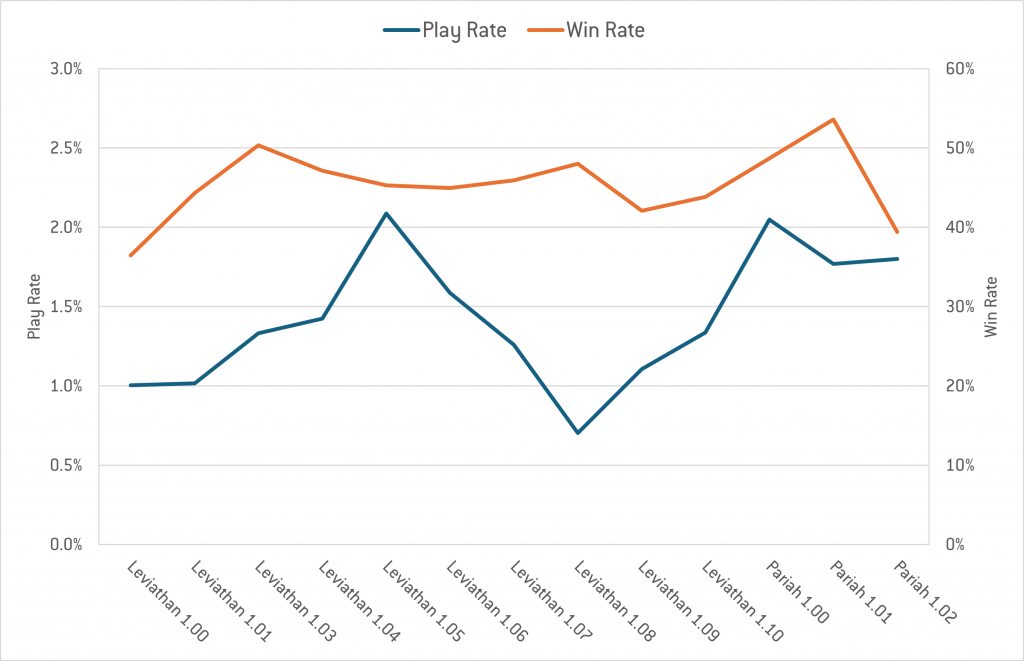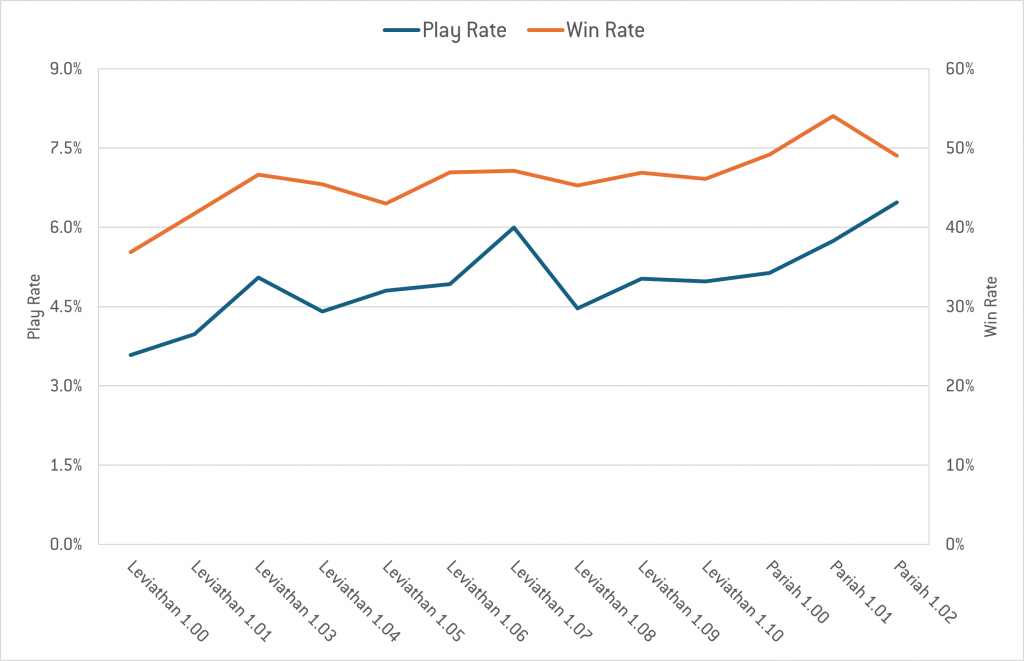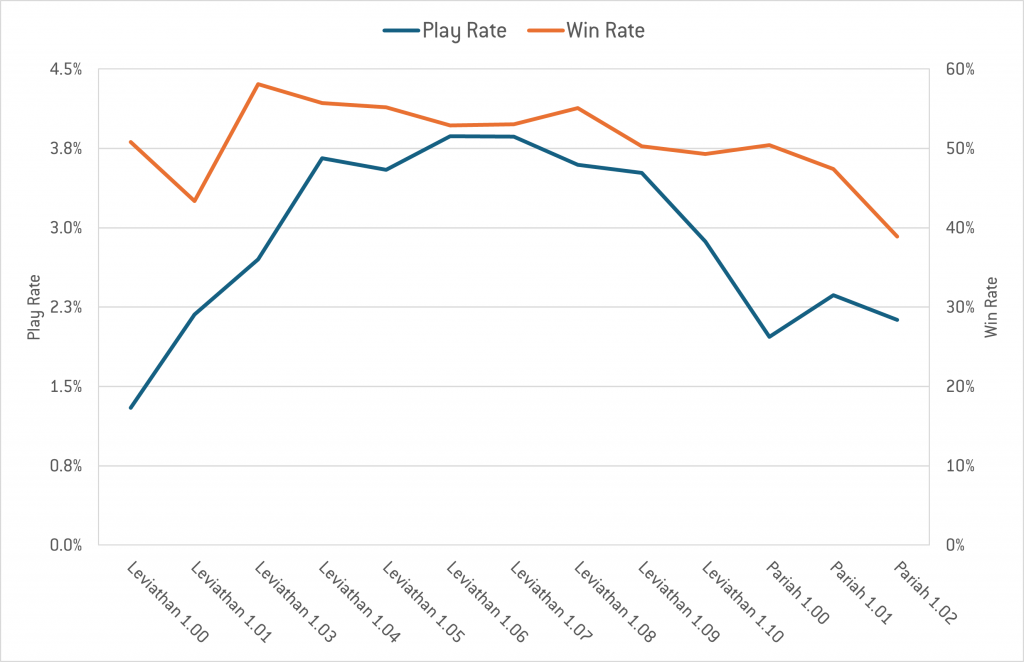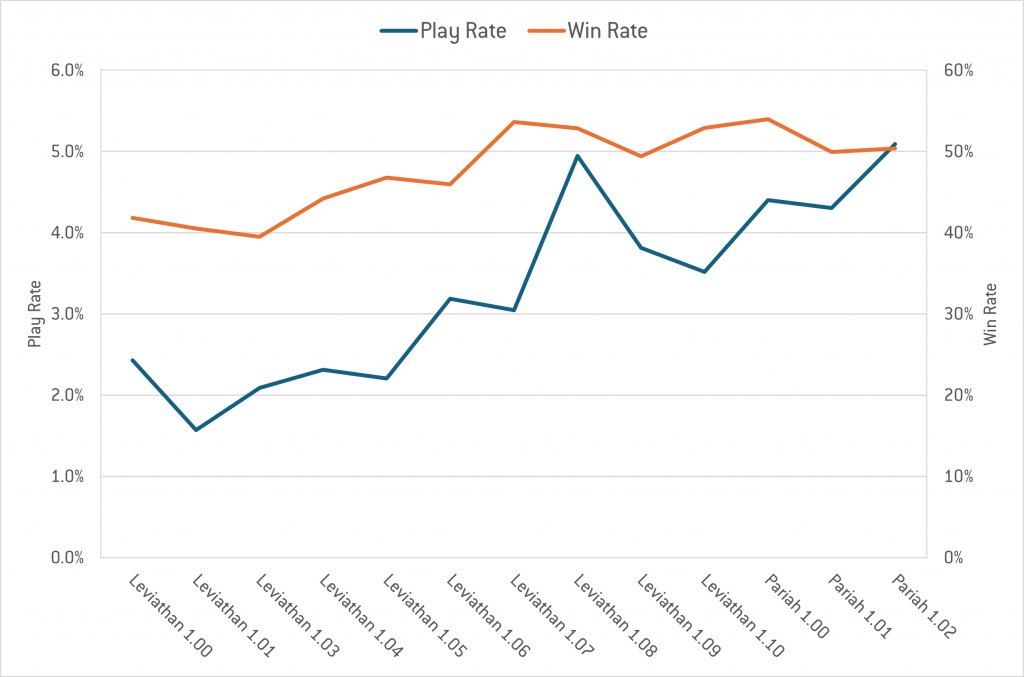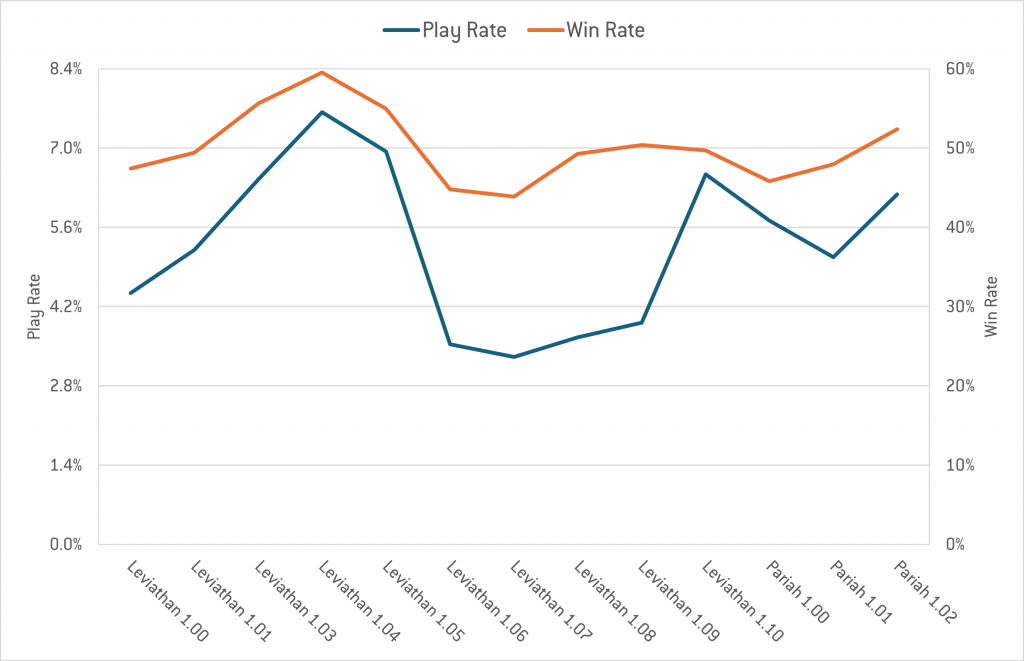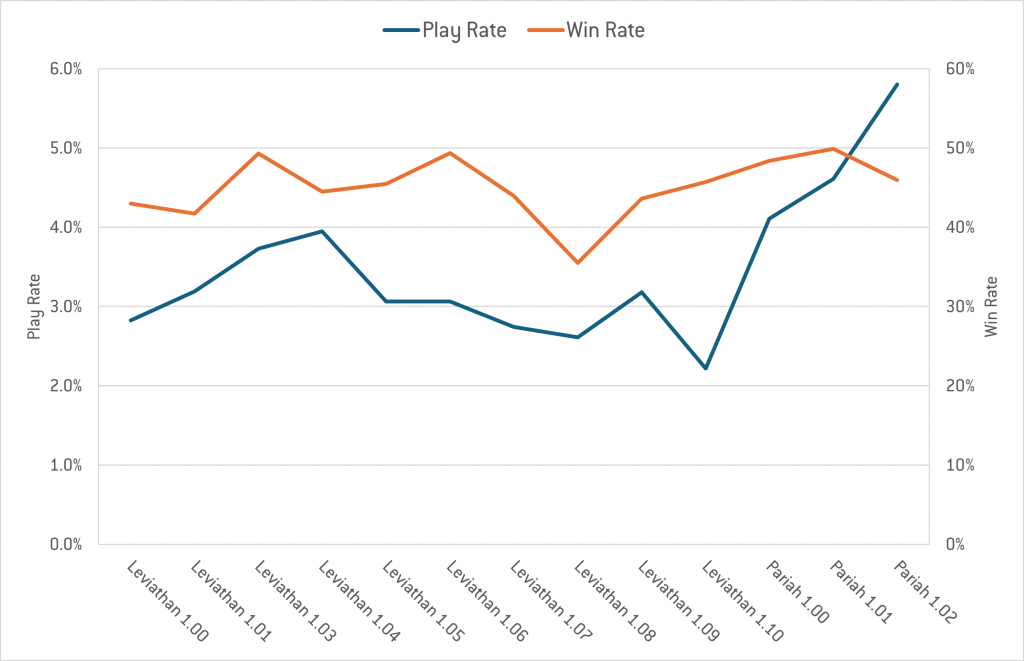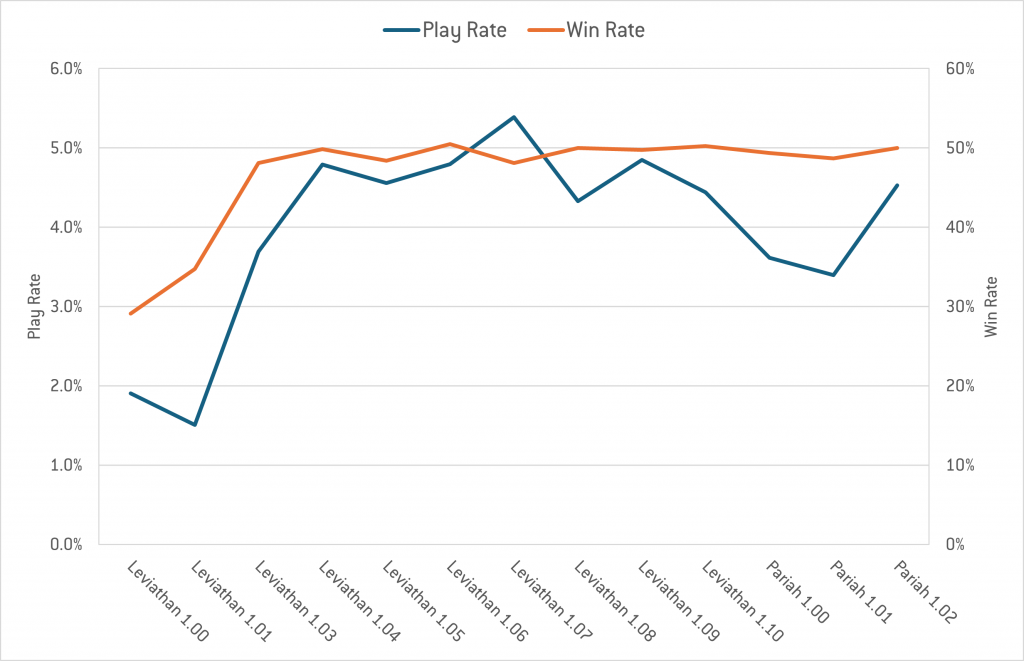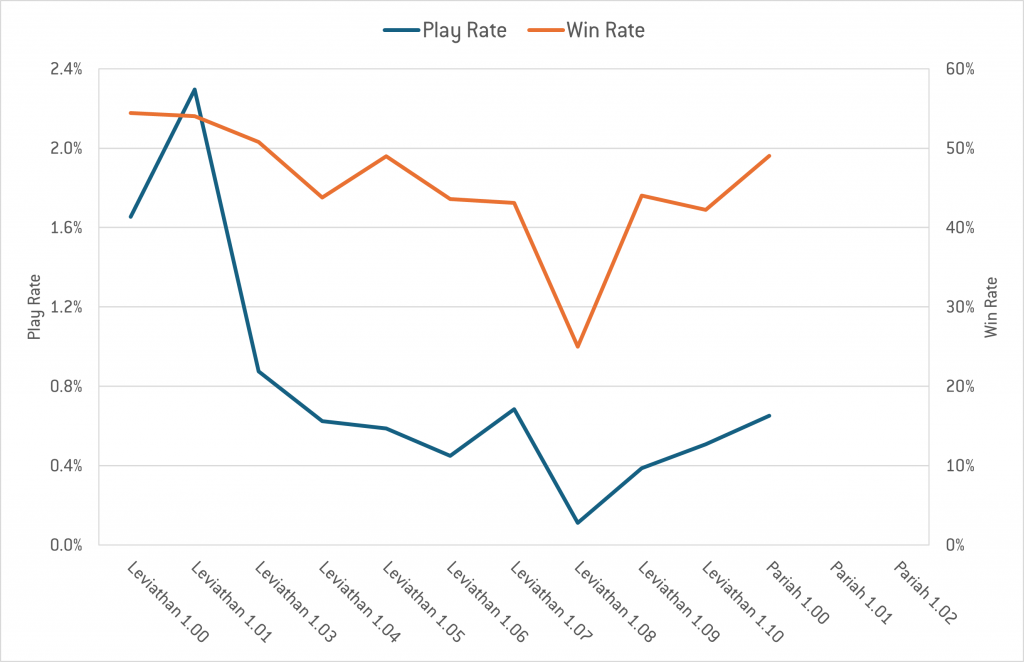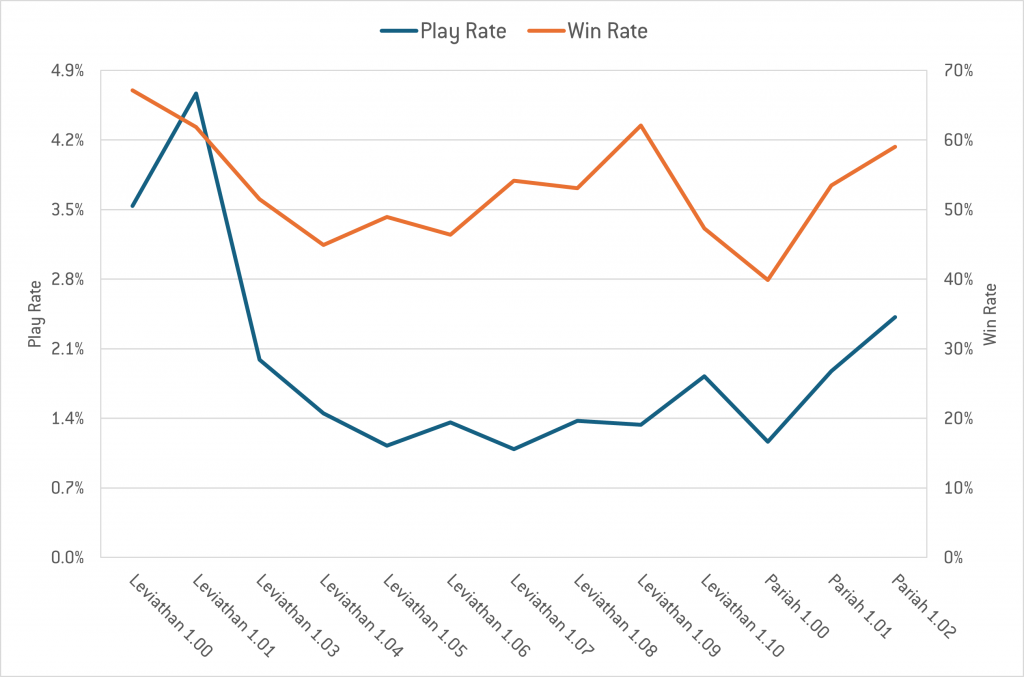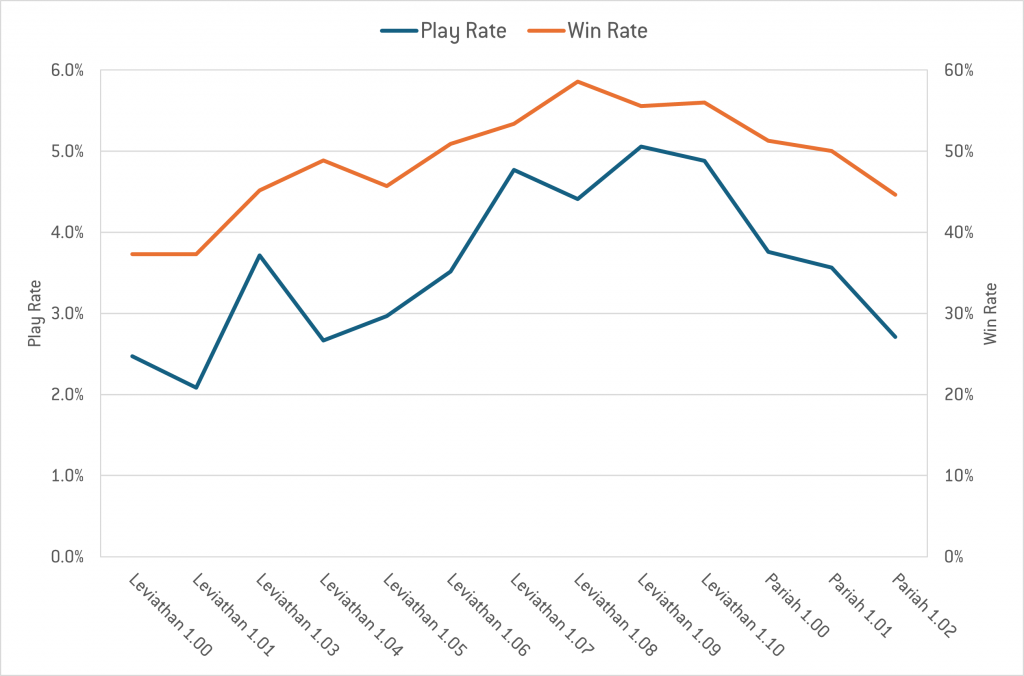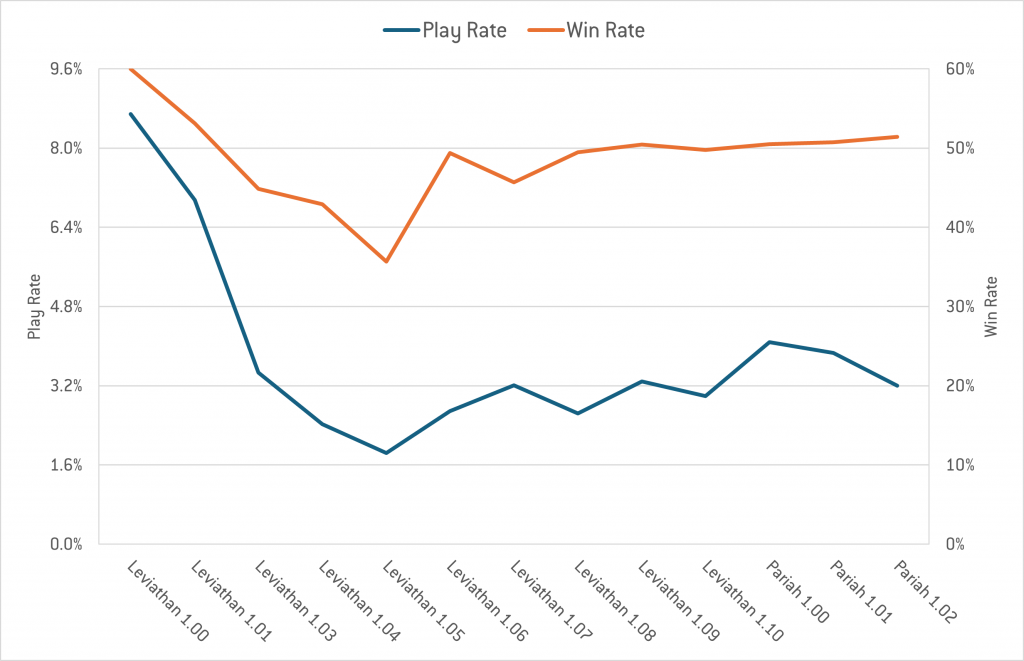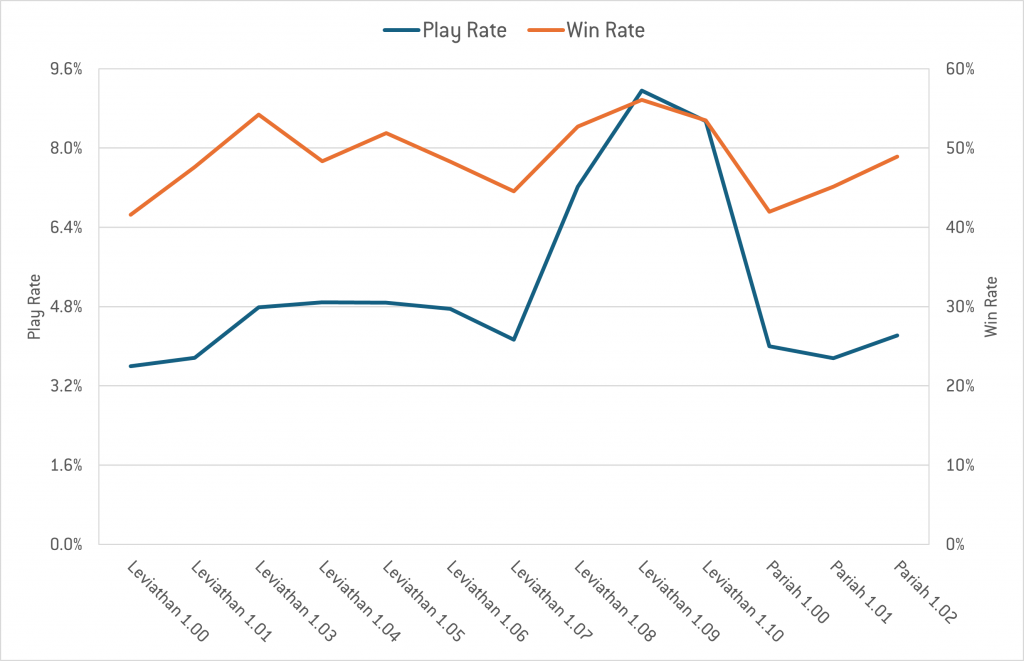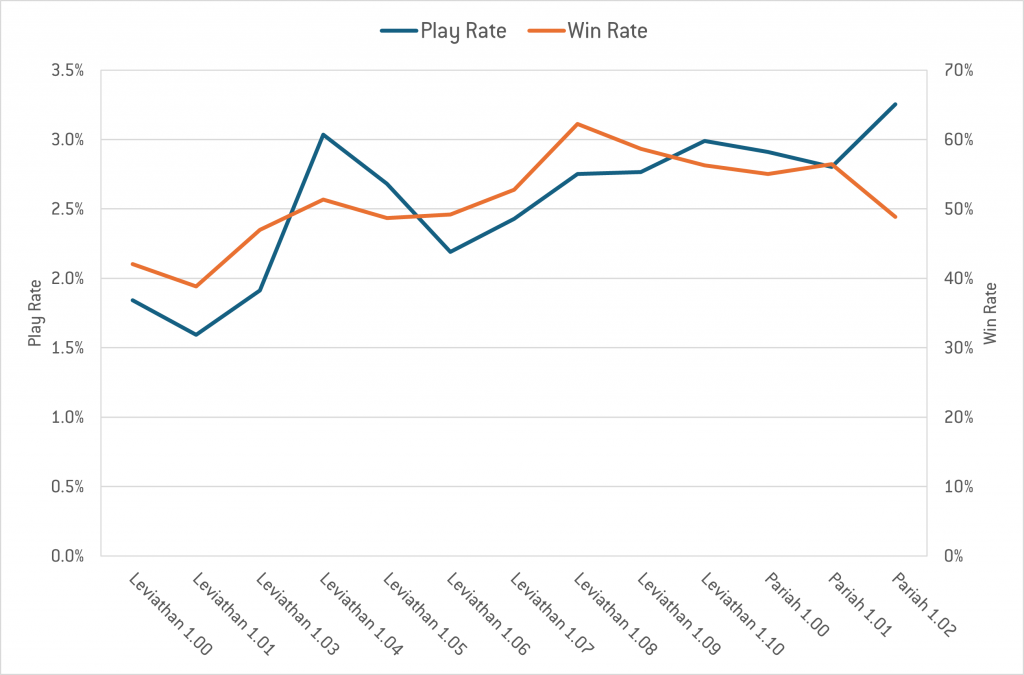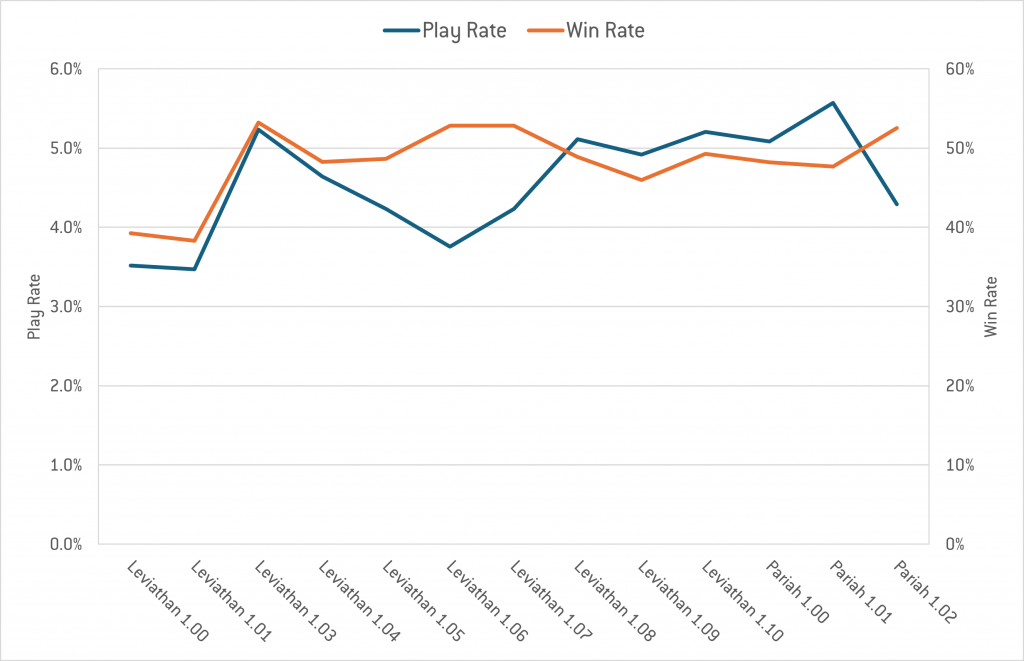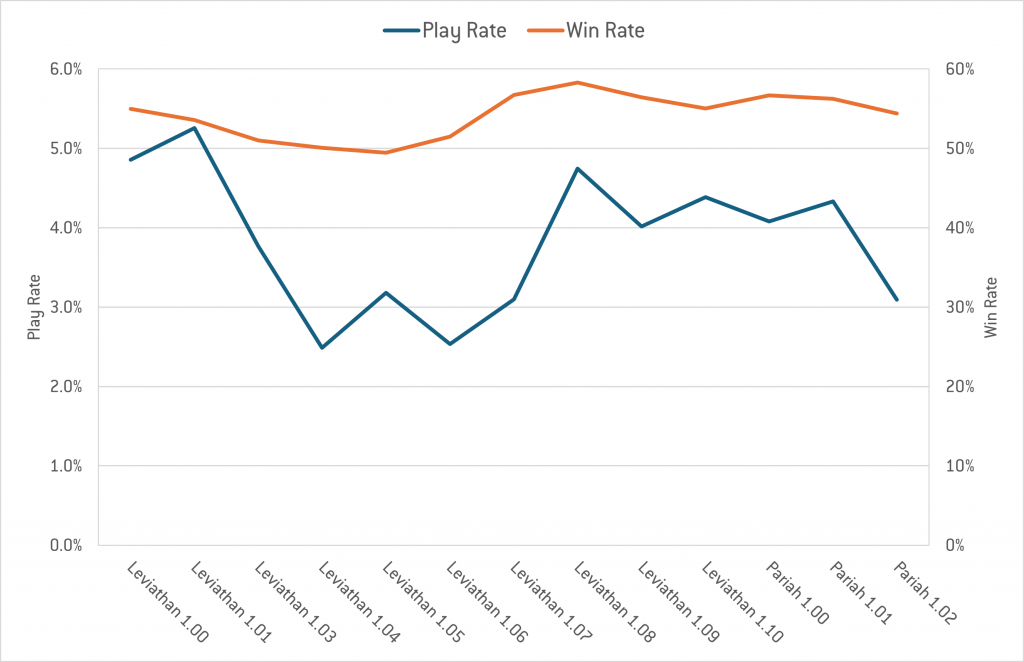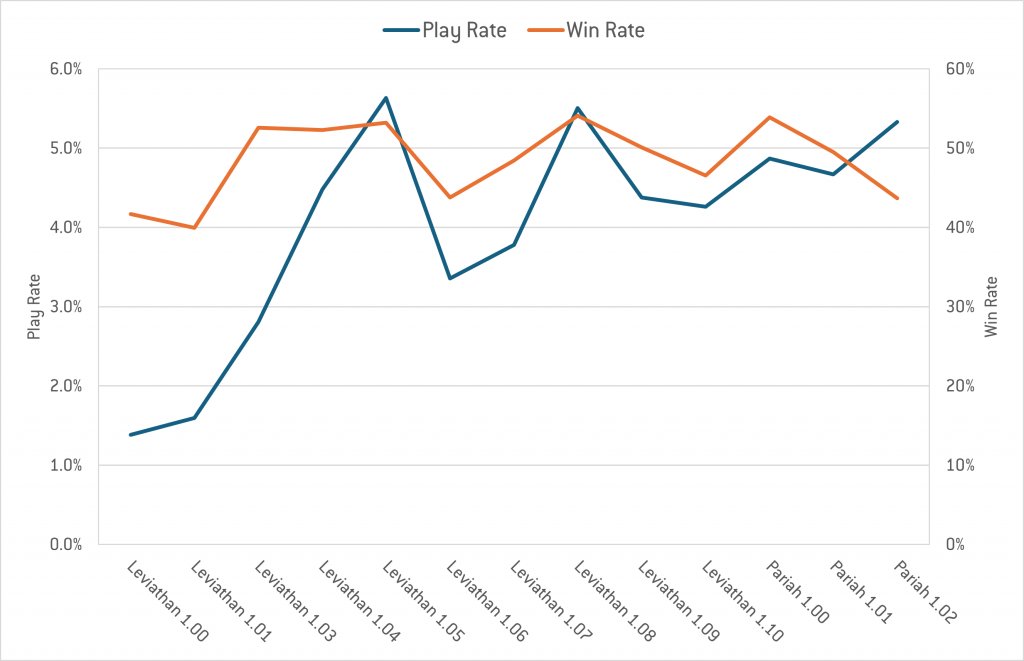In Hammer of Math, we take a look at key statistical issues in wargames. Today we’re looking at how balance updates have impacted factions throughout the 10th edition of Warhammer 40,000.
Tenth Edition gave us our first “reset” edition since the 8th Edition rewrite of the game back in 2017. A full range of indexes released free to the public alongside free core rules for the game. While not as substantial a rewrite of the game as 8th Edition was from 7th, the transition still made a number of major changes from 9th, and changes to unit characteristics would end up being the driving factor behind the need to re-index the game. The introduction of Objective Control, Battle Shock, and the elimination of the Psychic and Morale Phases were among the headlines, but there were plenty of other key changes.
Some of the most important of these changes were to missions: With Tenth edition Games Workshop built on the work they’d started in 9th edition, releasing fully developed mission packs with deployment maps, primary, and secondary missions. Though in tenth they’d also add recommended terrain layouts and a revised mission structure with randomized secondary missions, plus a tournament companion document providing guidelines and additional rulings for tournament organizers looking for help with their events.
This edition has also seen even further involvement from Games Workshop on the game balance front – they’ve committed to at least quarterly points updates, with major balance updates coming every other quarter. They’ve somewhat exceeded this, especially with the early updates that attempted to bring a rather wild initial launch into line.
This article aims to review how successful these balance updates have been from the perspective of tournament play, focusing on faction representation (play rate) and faction win rates. There are a host of other statistics that we can look at, but Win Rates are what tend to be what are discussed the most, and are typically a very good litmus test for success of a faction.
A Timeline of Key Balance Updates
At Stat Check we do our best to delineate between each distinct meta state in our data tracking. Each new meta is defined based on what significantly shifted in the game – be it a balance update, a codex release, points update, and so on. For the purposes of this article, these are the major meta states we will be looking at (note that many more changes were made in each of these updates, this article will just highlight the major ones – the reader is encouraged to go check out Goonhammer’s previous Balance Update review articles!):
- Leviathan 1.00 – Initial Release – here’s where we started, what a wild ride we’ve been on!
- Leviathan 1.01 – Balance Patch – the first major adjustment to the game came just a few weeks into the new edition. This update made some changes to Aeldari’s Fate Dice army mechanic, as well as increasing points on many models with Towering or Indirect Fire weapons.
- Leviathan 1.03 – Balance Dataslate & Tyranid Codex* – This brought the first of many changes to Devastating Wounds – making it so they no longer did Mortal Wounds, merely bypassing Invulnerable Saves and Armour Saves. Overwatch was significantly restricted, preventing using Indirect Fire as well as from Titanic units being able to use it at all. Towering also received a major update, eliminating the ability for such a model to see the entire battlefield. Genestealer Cults received a major nerf to the Cult Ambush army mechanic, significantly reducing their respawn rate.
- Leviathan 1.04 – Space Marine Codex – the single biggest change to marines here is that they lost wound rerolls in their Oath of Moment army mechanic, but also gained many new ways to play with their units, with seven detachments.
- Leviathan 1.05 – Necron/AdMech Codexes – the Necron codex began to hold Court while AdMech continued to rust in the corner.
- Leviathan 1.06 – Q1 2024 Balance Dataslate – Aeldari saw further adjustments, reducing their starting Face Dice and also hitting Phantasm as well as some targeted unit nerfs. This update also featured something new for Games Workshop – a whole new detachment for Drukhari in the form of the Skysplinter Assault. Notably absent is addressing Necrons who are currently riding very high on Canoptek Court and Hypercrypt Legion.
- Leviathan 1.07 – Dark Angels Codex – the Lion whimpered more than roared with this update.
- Leviathan 1.08 – Q2 Balance Update & Orks/Custodes Codexes – Necrons get some attention, bringing them down slightly. AdMech gets some points love, with a hint at the changes that will come later this year. Bully Boyz and Green Tide rear their heads, while Dread Mob fizzles out with the first of many Forge World units going to Legends with the loss of Grot Tanks.
- Leviathan 1.09 – T’au Codex – Crisis suits get completely reworked, there’s a Kroot detachment, and Mont’ka starts rushing people down.
- Leviathan 1.10 – CSM Codex – Another codex that sees many sidegrades to what proved to be a very stable index throughout a tumultuous edition launch. With eight detachments, CSM are poised to have some of the most varied builds in the post-index world.
- Pariah 1.00 – Initial Release, Q3 Balance Dataslate, Adepta Sororitas/Genestealer Cults Codexes – New mission pack, with Secret Missions introduced, AdMech gets a codex overhaul, Orks get gutted, Necrons finally get tapped in a way that they needed. Sisters come bringing much flame, Genestealer Cults begin planning.
- Pariah 1.01 – Imperial Agents Codex – Now all Imperium armies can take a Sisters Immolator! Rest in peace Deathwatch, at least until December?
- Pariah 1.02 – Q4 Balance Adjustment** – An MFM update along with a few small rules tweaks.
* There was a Leviathan 1.02 where a few events used the Balance Dataslate without the Tyranids codex, the number of games here are fairly small and so have been excluded.
** We only have a couple weeks of data from this update, so few conclusions can be drawn from them.
Now that we have all that defined, let’s talk about the data that’s being used here.
Tournament Data as a Window into the Game’s Health
Getting this out ahead of the inevitable discussion – tournament data represents a snapshot of the game, but it is in no way a full representation of the game that is being played at all levels. However despite this, tournament data is a good indicator of game health – tournaments represent a significant time and money investment on the player’s behalf. If a faction is being played at tournaments regularly, then there’s a good chance that this faction is in a good state. If it’s being played at a disproportionate rate, then there’s probably an issue with it (too strong or too weak). That being said, let’s take a look at the data we’re using here to evaluate the meta through the last 16 months or so.
The data used in this source is from events of 5+ rounds and 24+ players, which forms the basis of Stat Check’s meta data dashboard, seen here. This data contains over 110,000 unique matches, played across 45 countries, and is sourced primarily from Best Coast Pairings. Other sources of data are used, such as MiniHeadQuarters (France), TourneyKeeper (primarily Poland), and Tabletop Herald (Germany). Note that while each of these metas varies in length (and due to tournament rules lock timelines, these can overlap somewhat), the average time between significant changes is about seven weeks. One key note as well is that these numbers exclude mirror matches, as these can skew a faction’s performance towards 50%, hiding struggling or too powerful factions when they become a larger part of the meta.
Now that we’ve reviewed the data that we’re going to be working with, let’s review how each faction has fared throughout the edition to date.
Patterns in Faction Performance Over Time
Let’s talk about four of the key factions this edition to date: Aeldari, Adeptus Custodes, Necrons, and Space Marines. The other 22 factions are shown at the bottom of this article, but we’re going to focus on these four as they’ve had some of the biggest swings of the edition.
Aeldari
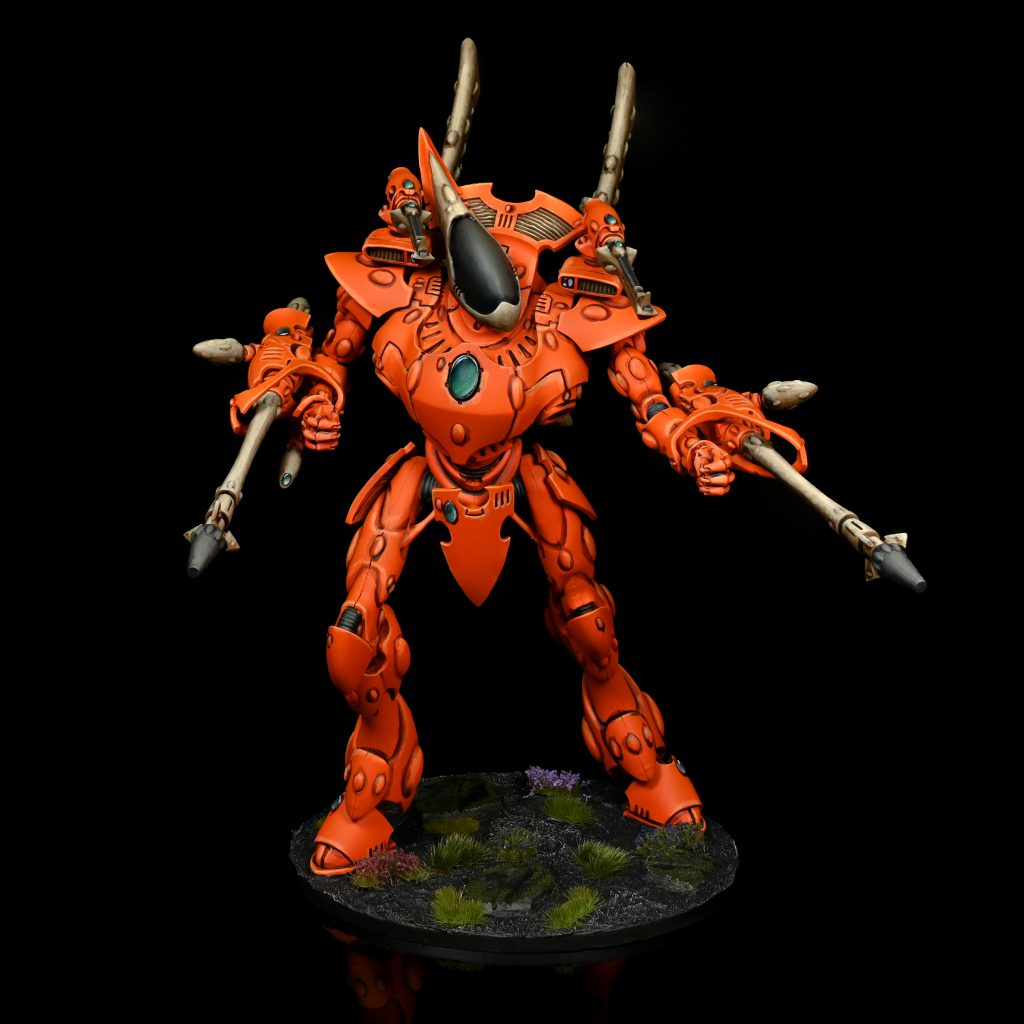
Aeldari started out very hot (read: Broken) out of the gates in 10th edition. Across the first two metas they sustained a win rate close to 70% while boasting a 10.5% play rate – more than one in every ten tournament players was fielding an Aeldari army during these first weeks. They were a dominant army with considerably over-tuned rules, abusing all of the most problematic rules of the early edition – Devastating Wounds, Overwatch, and Towering – while having a strong army mechanic to remove dice variance and a strong detachment rule backing up powerful datasheets. As the edition has gone on, this index has received substantial rewrites and nerfs, which were closely followed by both drops in win rates and in play rate. While their win rate has largely stabilized since Leviathan 1.08, their play rate continues to drop, dipping to what is considered a “normal” play rate of 3.9% (with 26 factions, a perfect distribution would have each faction being played by 3.8% of the meta).
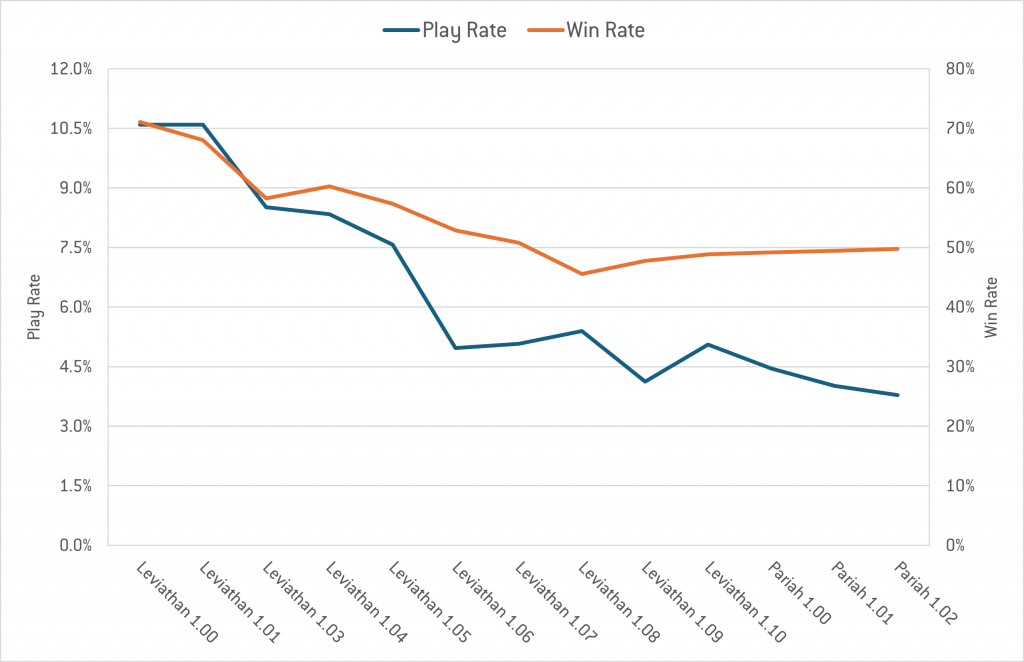
Adeptus Custodes
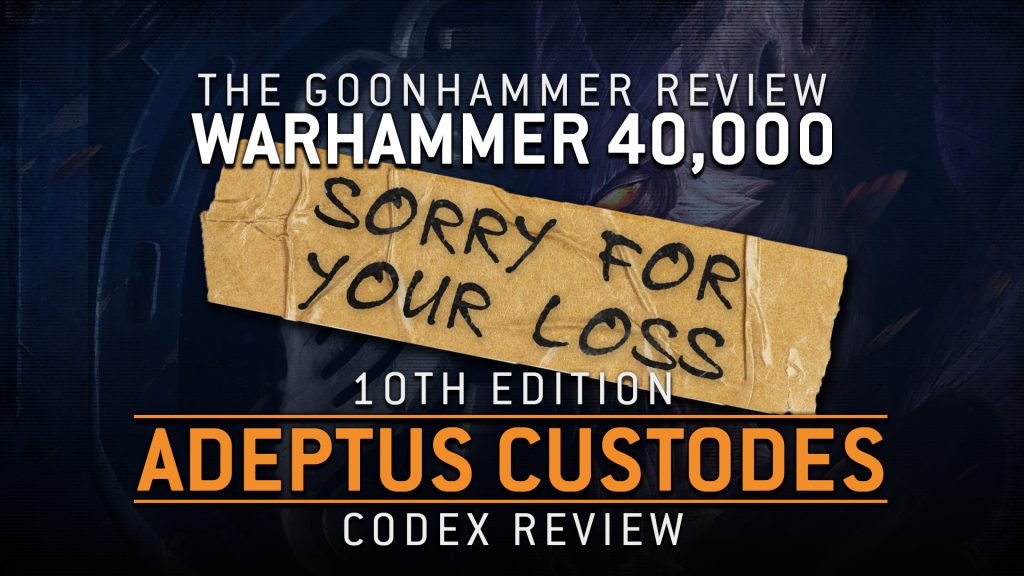
It seems as if no other army has been as polarizing to both its players and its critics than Adeptus Custodes. This army came out of the gate with a strong start, making up over 8% of the first major meta (Leviathan 1.01) while managing a very solid 54.7% win rate. This initial performance was quite impressive given it existed alongside the Aeldari index, and since that point the faction has found itself on a very interesting roller coaster. Custodes have seen two big swings this edition – and similar to a roller coaster the later peaks are considerably lower. Custodes saw significant changes in the initial balance dataslate in Leviathan 1.03 (most notably they lost protection against Devastating Wounds as those were changed to no longer caused mortal wounds to end the problem of them spilling over), then some buffs in Leviathan 1.6 (regaining protection against Devastating Wounds and other buffs after Dev Wounds were changed), and cratering after a very poorly-received codex. Since then they’re seen a steady uptick in both play rate and win rate as Custodes players unpack the codex and the meta becomes less hostile towards them.
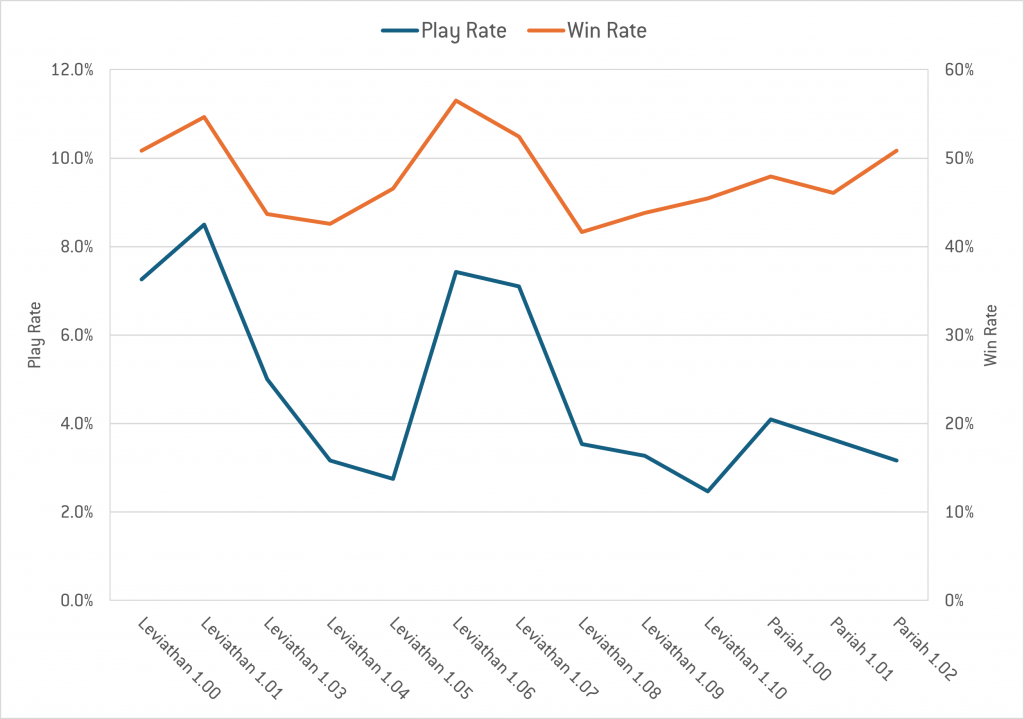
Necrons
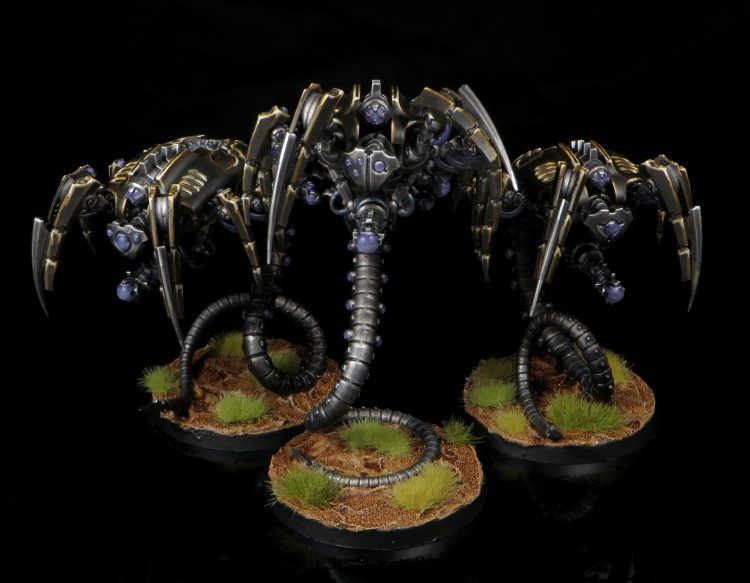
An army with a similar story to Custodes, but with vastly different outcomes is the Necrons. Necrons similarly saw a strong start to the edition, riding some very strong Reanimation mechanics to a 6% play rate with a 50% win rate which they held fairly consistently throughout those tumultuous early metas. The key difference here is that their codex, while addressing the silver tide that caused much consternation to early edition players (math bricks as Overlord Skari would say), gave them two very new and very potent ways to play the army in the form of the Canoptek Court and the Hypercrypt Legion. The strength of these two detachments coupled with considerable datasheet changes awoke quite a few tomb worlds and Necrons quickly became the army to beat, sitting in the 55-60% win rate range while having 9% of the player base, with their many achievements including winning LVO 2024. Necrons also found themselves adjusted at a considerably more gradual pace, which resulted in them not dipping below the 50% win rate line and maintaining a very health 6-7% play rate even into early Pariah Nexus metas.
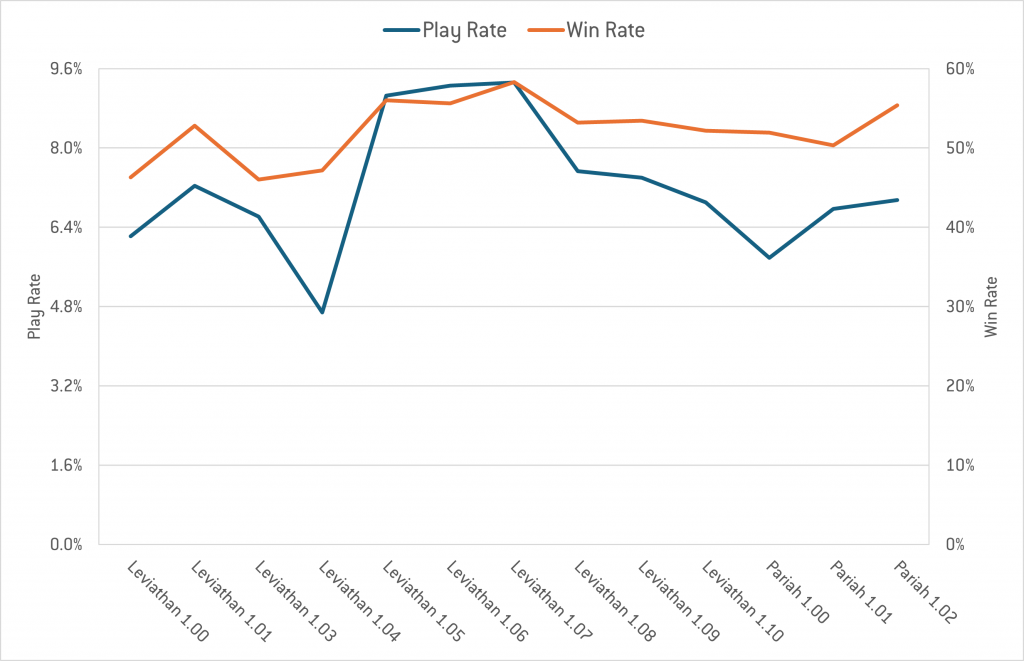
Space Marines
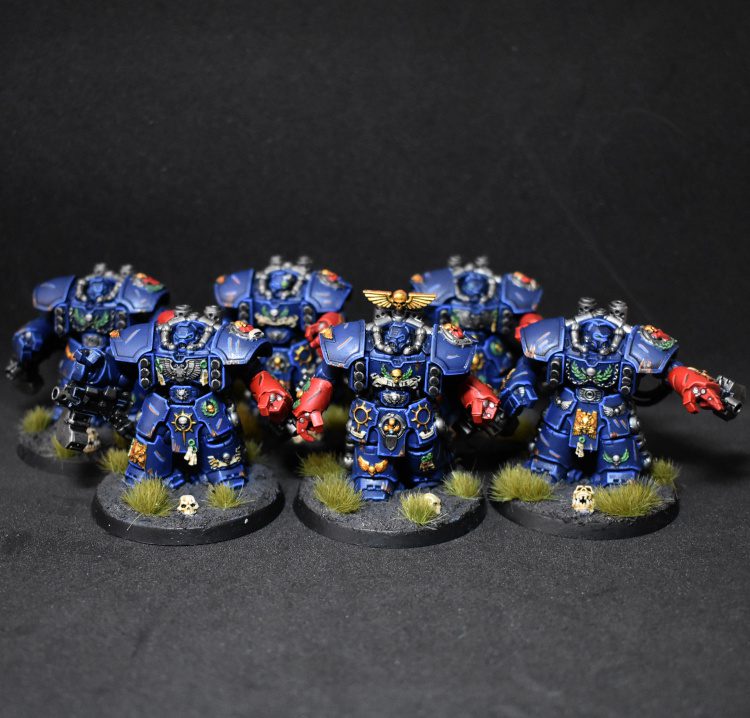
For the last of our deep dives, we take a look at Space Marines – notably just the codex compliant armies. For data tracking reasons, codex non-compliant armies (e.g. Dark Angels) running Codex: Space Marines detachments are tracked separately. Space Marines have experienced a very interesting edition – they have not managed a single meta above 50% on win rate while having fairly high play rate through the early edition. However since Leviathan 1.08, they’ve experienced a continual decline in play rate. Despite this, they still make up 3.9% of the meta, which is the same as Aeldari currently is. Games Workshop has hinted in the latest balance update that they are exploring ways to make game play more enjoyable for marines, time will tell if this helps reverse this trend.

Everyone Else
Missed your faction? Here’s all 26 factions in alphabetical order. Which one is the most interesting to you?
Additional Notes
On the whole there’s a positive correlation (r=0.41) between play rate and win rate, but it’s not absolute – not everyone abandons a faction when it takes a hit, nor does everyone bandwagon when a faction’s good, particularly if it’s not hitting those insane 60%+ win rates. When factions move up between metas it’s around 3-4 percentage points on average, though major shifts will absolutely occur: The largest shift observed in tenth edition so far has been for Leagues of Votann, whose win rate jumped an astonishing 23.5 points from Leviathan 1.01 to 1.03 (and taking them from a “hell no” to my most played army of the edition). On the other side, negative shifts tend to be by about the same amount, though drops as large as -22% have been observed.
Have any questions or feedback? Drop us a note in the comments below or email us at contact@goonhammer.com. Want articles like this linked in your inbox every Monday morning? Sign up for our newsletter. And don’t forget that you can support us on Patreon for backer rewards like early video content, Administratum access, an ad-free experience on our website and more.



